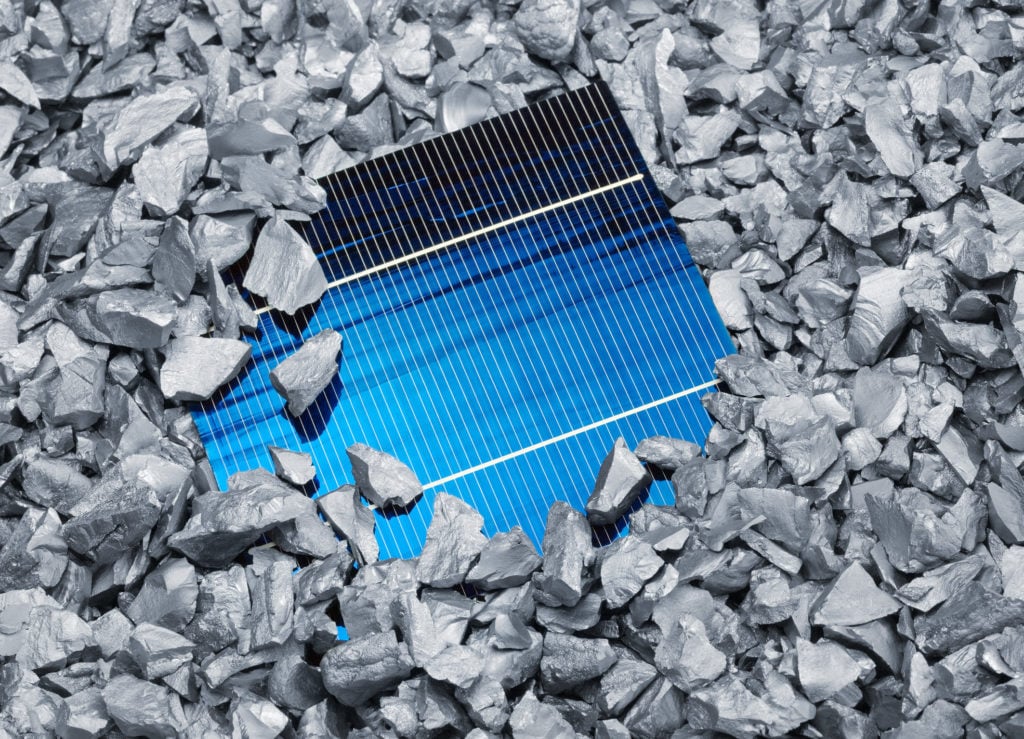
Polysilicon manufacturer Highland Materials has secured US$255.6 million in 48C tax credits to build a polysilicon plant in the US.
The new facility is expected to have an initial annual capacity of 16,000 metric tons (MT) of solar silicon, to be increased to 20,000MT in four years, which would be equivalent to 10GW of solar cells, according to the Solar Energy Manufacturers for America (SEMA) Coalition. The SEMA Coalition added that this is the first new commercial polysilicon plant to be built in the US since the passage of the Inflation Reduction Act (IRA) in August 2022.
Unlock unlimited access for 12 whole months of distinctive global analysis
Photovoltaics International is now included.
- Regular insight and analysis of the industry’s biggest developments
- In-depth interviews with the industry’s leading figures
- Unlimited digital access to the PV Tech Power journal catalogue
- Unlimited digital access to the Photovoltaics International journal catalogue
- Access to more than 1,000 technical papers
- Discounts on Solar Media’s portfolio of events, in-person and virtual
A location for the polysilicon plant has not been disclosed, nor when it will begin commercial operation.
Highland Materials is among over 100 companies awarded tax credits from the US government under the Qualifying Advanced Energy Project Tax Credit (48C) scheme, which recently set aside US$4 billion for tax credits, of which US$2.7 billion is earmarked for use in clean energy manufacturing projects.
Established in 2009 under the American Recovery and Reinvestment Act, the 48C scheme received an additional US$10 billion under the IRA. The initiative provides an investment tax credit (ITC) associated with an investment in a manufacturing facility.
“We are excited about the Department of Energy’s sign of support for Highland and our technology,” said Richard Rast, president of Highland Materials. “By commercialising our silicon purification technology, we as an American company can continue to innovate on American soil with significantly less cost and carbon emissions than other manufacturers.”
According to the company, its solar grade polysilicon uses a proprietary technology that is more environmentally-friendly than current technologies, such as Siemens and Fluid Bed Reactor, all while delivering performance on par with these technologies.
New polysilicon facilities in the US
New polysilicon announcements in the US have been scarce since the IRA was passed, unlike the announcements of new module capacities, which have been common in the past two years.
New polysilicon developments have typically been more negative, such as polysilicon manufacturer REC Silicon shutting down its polysilicon production capacity at its Butte facility in Montana earlier this year. More recently, the company slightly delayed the first polysilicon shipments from its Moses Lake facility – in the US state of Washington – from the end of the first quarter of 2024 to early in the following quarter.
“This polysilicon plant heralds a new era in US solar production. The SEMA Coalition has been emphasizing the importance of securing domestic production in the high-value upstream steps of the supply chain – polysilicon and wafer production – and this represents a real milestone,” said Mike Carr, executive director of the SEMA Coalition.
Earlier this month, the SEMA Coalition called on the US Biden administration to “act aggressively” to support a domestic solar manufacturing industry with a disparity of capacity announcements further upstream, according to a guest blog by the advisory board Clean Energy Associates back in December.






